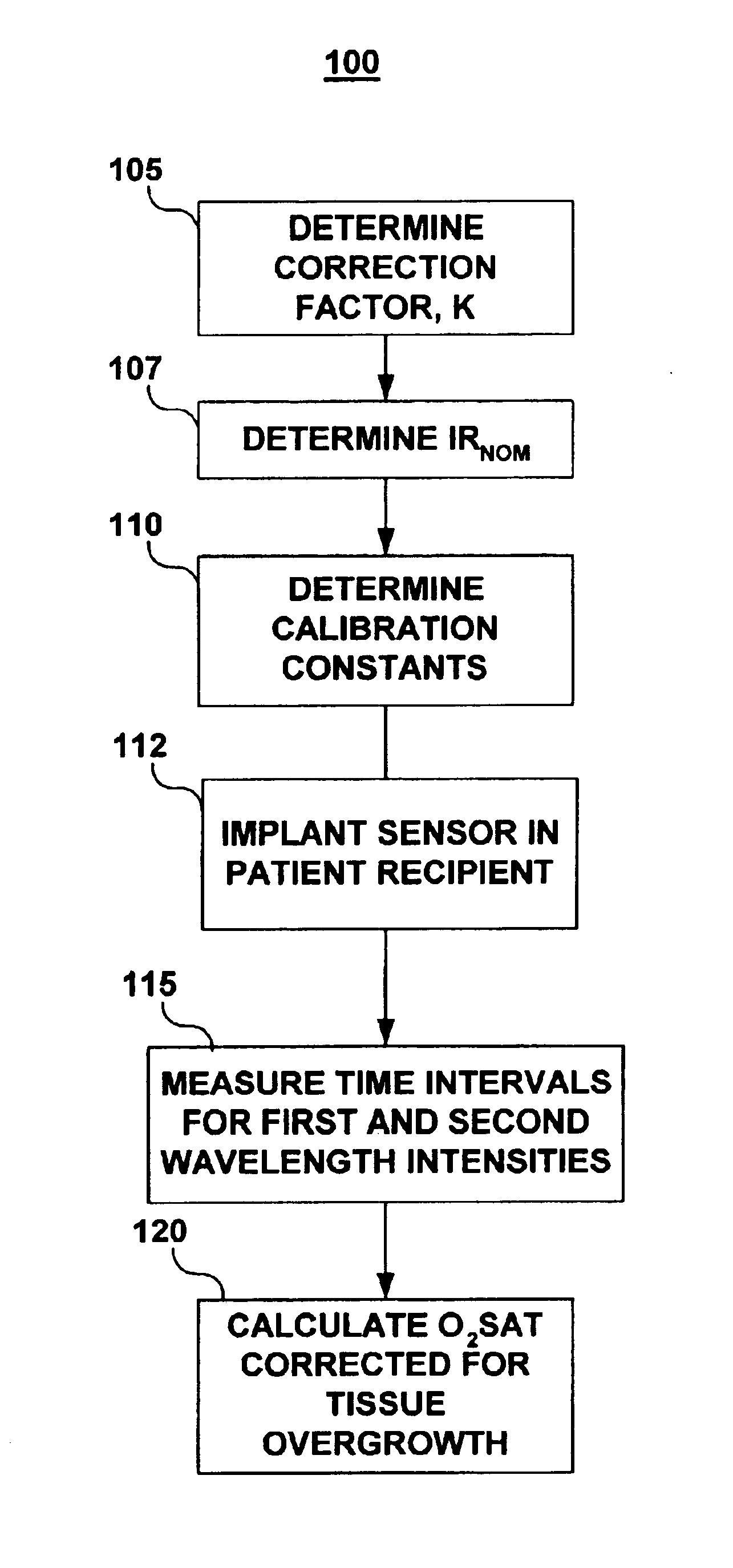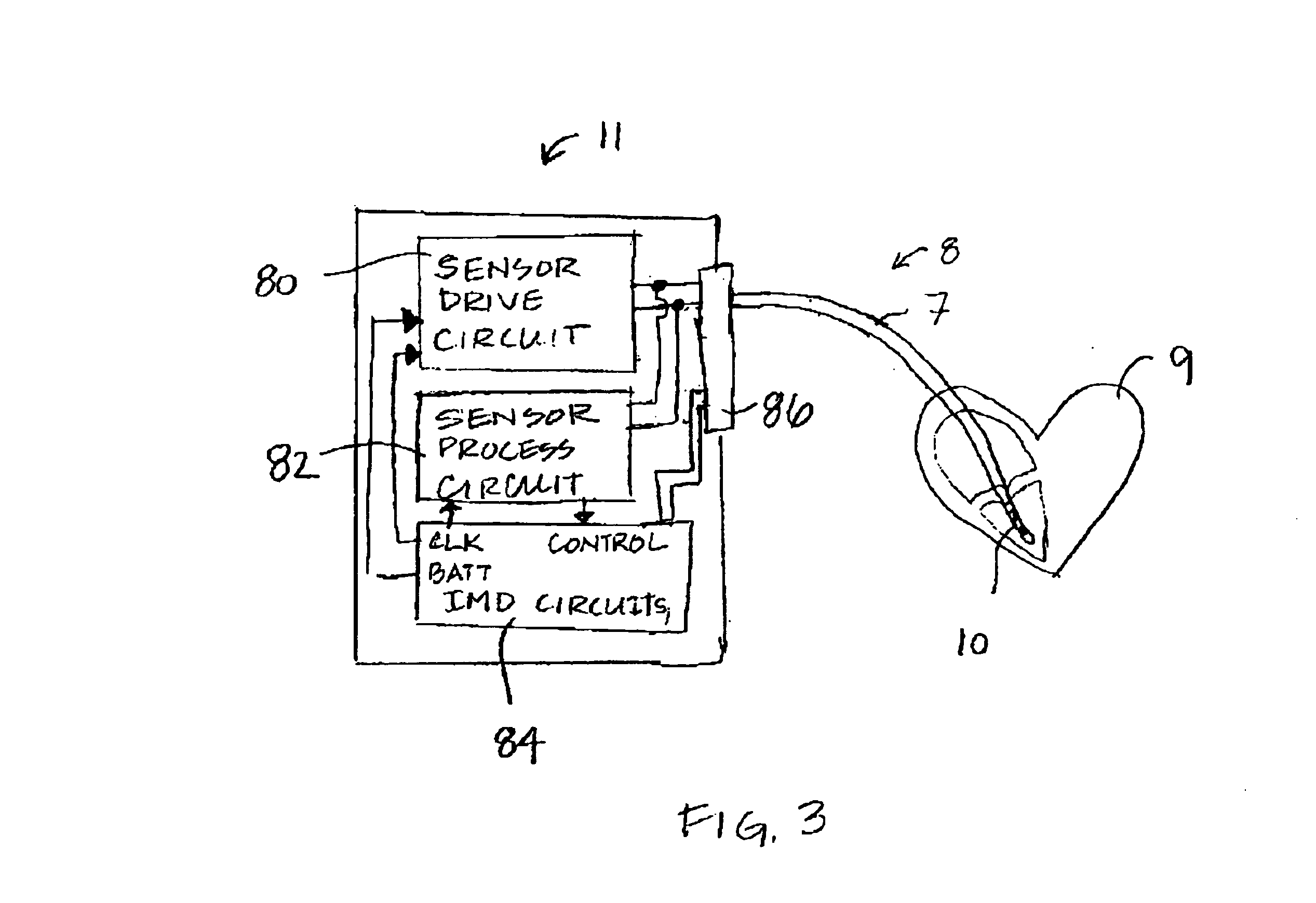Normalization method for a chronically implanted optical sensor
- Summary
- Abstract
- Description
- Claims
- Application Information
AI Technical Summary
Benefits of technology
Problems solved by technology
Method used
Image
Examples
Embodiment Construction
[0017]The present invention is directed at providing a method for accurately measuring changes in blood oxygen saturation using a chronically implantable optical sensor. In particular, the present invention provides a method for compensating for extra light intensity detected by the optical sensor due to light scattering matter, typically collagenous tissue or thrombus, which may be present over the sensor. The methods included in the present invention employ a two-wavelength system and a correction method that allows the extra light intensity due to light scattering tissue over the sensor to be compensated for in calculating oxygen saturation.
[0018]Two-wavelength optical sensing systems are known for use in the field of blood oximetry. See for example, U.S. Pat. No. 3,847,483 issued to Shaw et al. In a two-wavelength system, the reflected light signal of one wavelength that changes in intensity with blood oxygen saturation is normalized by a second wavelength of which the reflected...
PUM
 Login to View More
Login to View More Abstract
Description
Claims
Application Information
 Login to View More
Login to View More - R&D
- Intellectual Property
- Life Sciences
- Materials
- Tech Scout
- Unparalleled Data Quality
- Higher Quality Content
- 60% Fewer Hallucinations
Browse by: Latest US Patents, China's latest patents, Technical Efficacy Thesaurus, Application Domain, Technology Topic, Popular Technical Reports.
© 2025 PatSnap. All rights reserved.Legal|Privacy policy|Modern Slavery Act Transparency Statement|Sitemap|About US| Contact US: help@patsnap.com



